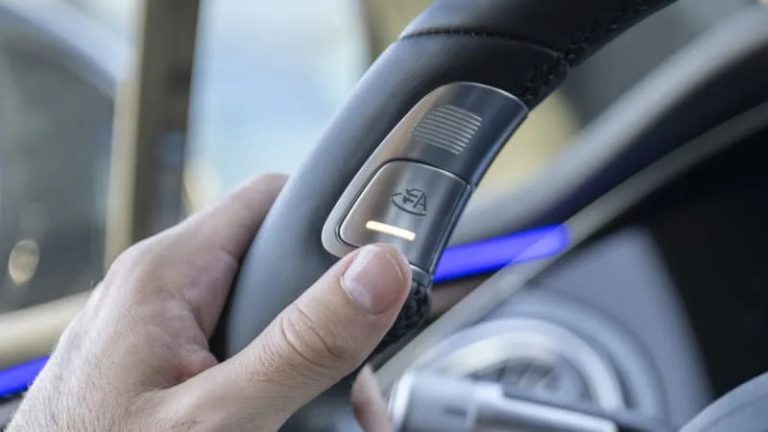NINTH CIRCLE OF TRAFFIC HELL, Calif. – For the better part of a decade, I would get on Interstate 10 at Cloverfield Boulevard here in Santa Monica, Calif., and then sit in literal gridlock for about 40 minutes until I exited the 10 a mere six miles later at Fairfax. It was a boring, soul-sucking, frustrating, get-mad-at-the-world experience. I moved to Oregon partly because I just couldn’t take it anymore. Yesterday, I found myself right back there and despite initial pangs of anxiety, it wasn’t that bad this time. That’s because I wasn’t driving. Or even paying that much attention to the depressing, gridlocked world around me. I was letting Mercedes Drive Pilot do the job.
Despite what anyone might claim, there is no such thing as a “self-driving car” currently on sale. New car autonomy is broken into five levels, and to date, nothing has crossed the Level 2 threshold. Even General Motors’ hands-free Super Cruise and Ford’s BlueCruise are Level 2 since they still require the driver to pay attention at all times, and shut down if it detects your eyes aren’t on the road. Tesla’s Autopilot isn’t quite as hellbent on ensuring your attention, but it too requires the driver to take over when necessary and is therefore Level 2.
Mercedes Drive Pilot, which will be available on the S-Class and EQS Sedan for 2024, is the first Level 3 system available in the United States. The key advancement here is that it does not require the driver to pay attention. They can use the vast central touchscreen to watch videos, play games or browse the internet while the car does all the work. Looking at your phone still runs afoul of California and Nevada law (that would be just one of the laws that need some adjustment due to this system), but apparently reading old-fashioned printed materials like books and magazines should be OK. I’d consult a lawyer about that, but apparently it’s not explicitly forbidden unlike phones, instead falling under “distracted driving,” which I’m guessing is negated by the Level 3 capability. Again, just a guess, not a lawyer.
To be clear, Drive Pilot is still not a self-driving car that can take you from any point A to any point B. It can only be used on restricted highway/freeways that have been high-definition mapped. It can only operate at speeds up to 40 mph, meaning traffic. It will not work at night or in tunnels, or if it rains or snows. It can also only be operated (and purchased) in Las Vegas and the major metropolitan areas of California. Two reasons for that: California and Nevada are the two states that have authorized the use of Level 3 autonomous vehicles, and therefore are the only places where Mercedes did its HD mapping and other necessary preparations. For example, it needed to study all the possible emergency vehicle sirens and sounds of both states in order to properly program the car’s cameras and microphones to detect them.
Before taking a deep dive into more operational parameters, legal ramifications and all the extra stuff added to the S-Class and EQS to make Level 3 happen, let’s go over what it’s like to operate.
First, you must engage the Distronic adaptive cruise control system, which would be the Level 2 system found on other S-Class and EQS sedans. This system operates at all speeds, keeps a driver-selected distance to the vehicle ahead, and works in stop-and-go driving. Though it requires you to keep a token hand or even just finger on the wheel, the system will steer you neatly in your lane and make automated lane changes per a request from the driver or by itself when it deems the coast sufficiently clear (Super Cruise can do this, too). I used this system on the free-and-clear drive back to Santa Monica on the 10 and it worked flawlessly.
Again, though, Distronic requires driver interaction and attention. When the car determines that all the Level 3 parameters are met, white lights illuminate in the engagement buttons located at 2 and 10 on the steering wheel. Pressing either one of the buttons engages the Level 3 system, which is indicated by turquoise lights located above those buttons as well as on top of the steering wheel. They’re impossible to miss. Similarly colored illustrations appear in the head-up display and instrument panel, though exactly what it shows depends on the selected IP design at the time. The Driver Assistance screen is the most detailed.
At this point, you can sit back, relax and, in my case, perform the ultimate narcissistic move of watching yourself on YouTube.
When I nudged the power steering adjustment knob to move the wheel up a bit, those turquoise lights turned red, indicating I needed to take over. Had I reclined the seat, the same thing would’ve happened. This was because the system very much wants you to not get too comfortable and possibly fall asleep.
To take over, you can press the brake (like any cruise control, doing so disengages the system in any circumstance), the accelerator or the steering wheel buttons.
It’s important to note, though, that unlike Super Cruise and other Level 2 systems, the car does not simply drop the reigns and make you take over. The red lights are simply a warning that the driver must take over – the system remains in operation. If after 10 seconds I failed to take over, the system would assume I had become incapacitated in some way, turn on the hazards and come to a complete stop in the lane. It would have also unlocked the doors and called emergency services via the onboard Mercedes SOS system. Drive Pilot is already available in Germany, and in the majority of instances there, drivers took over within four seconds. Mercedes also says there have been no accidents reported in Germany while using the system.
Making this all possible is wildly complicated and makes you appreciate why “Level 5” autonomy is still very theoretical, if even possible. In terms of hardware, binocular lidar sensors are added to the front of the car, which in the EQS results in a pair of boxes awkwardly implanted within the otherwise smooth shield “grille.” To be honest, it doesn’t look great, though I suppose it’s better than some spinny thing on the roof. Additional cameras are added behind the windshield and back window, and an enhanced antenna array resides under a hump on the roof to ensure the hyper-accurate positioning system that can place the car within 1 centimeter of accuracy and even takes into account continental drift. Not unlike a modern airplane, there are redundant systems added: steering motor, braking system, wheel rotation sensors and electrical system. There is also an added road moisture sensor (windshield wiper activation is not good enough since the road could be wet without it presently raining), as well as existing elements like the various radar sensors and interior “Hey Mercedes” microphones.
Mercedes says the lidar is needed because of its superior ability to separate stationary targets, as well as measure the height of things. Radar isn’t so great at that. The stereo cameras are even better at differentiating between objects, but longitudinal distance isn’t so great and they’re susceptible to glare. Put altogether, though, along with info from the HD positioning system, there is enough information possible for the car to drive itself within the “Operational Design Domain” or ODD as Mercedes calls it.
Cars in Germany have an extra element that Mercedes is presently lobbying the California and Nevada governments to allow: LED lights in the headlight cluster, mirror housings and taillights glow turquoise when activated. Mercedes believes it’s beneficial for all road users to be able to identify when a car is being operated with an automated system. That includes law enforcement officers, who could very easily pull you over because they had no way of knowing the car was legally able to drive itself without you paying attention (well, as long as you weren’t looking at your phone). Mercedes is hoping for a response by the end of the year from California and Nevada, and we hope they succeed. It’s a smart idea.
Back behind the wheel, I find that Drive Pilot operates much as I used to in this driving environment – albeit without the existential dread of needing to do it all again tomorrow. It kept a close-enough distance to the car ahead and only once did another car manage to shoehorn its way in. Drive Pilot dealt with that quite well, too. If anything, I found the biggest problem to be what to do instead of driving. The infotainment system’s processing power just isn’t good enough to match what your smartphone is capable of, resulting in grainy YouTube videos and really slow browser speeds. It would be much improved if you could simply stream video content from your phone to the car, much as you can “AirPlay” between an iPhone and Apple TV.
Alternatively, California and Nevada legislators could make a loophole to existing smartphone-while-driving laws to allow them when operating a Level 3 vehicle. Making sure reading a hard copy of “War and Peace” or playing Nintendo Switch are explicitly OK, too, wouldn’t be a bad idea.
Drive Pilot will be available for the 2024 S-Class and EQS Sedan, but again, only in California and Nevada. Technically, those cars will cost exactly the same with or without the Level 3 hardware, but in order to activate it, customers must pay an initial subscription charge of $2,500. Yes, that’s confusing, and Mercedes’ reasoning for this approach didn’t help the situation. It also couldn’t say what the subscription would cost in subsequent years, though one can see how a subscription would be fair in this case given the need for updated mapping and constant information about construction zones and other parameter-related events.
Of course, the question must be asked: Is it worth it? I’m not so sure. Keeping a token hand on the wheel while using the regular Distronic system is barely different from keeping your hands in your lap, and as long as your entertainment is restricted to the car’s system or “Moby Dick,” the entertainment options aren’t that much better than a podcast. Now, should the folks in Sacramento and Carson City find a way to let you use your phone without getting nabbed by Johnny Law, then that changes things.
On the other hand, when you’re talking about cars that cost well north of $100,000, what’s another $2,500? Definitely cheaper than moving to Oregon.
Useful Resources For Everyone
Boost Your Web Site Traffic: Mytraffic Powerline
Explode Your Web Site Traffice: SparkTraffic
Start your affiliate journey here: OLSP Academy
Best Solution To Create Videos: Create Studio Pro
Best Solution To Create Graphics: ClickDesigns
Smart Chat Automation: ChatterPal
Multi-Purpose Video Maker: Avatar Builder
Multi-Purpose Video Creator: Video Creator
AI Human Spokesperson Videos: HumanPal
AI Content Writer & AI Human Voices: HumanTalk










